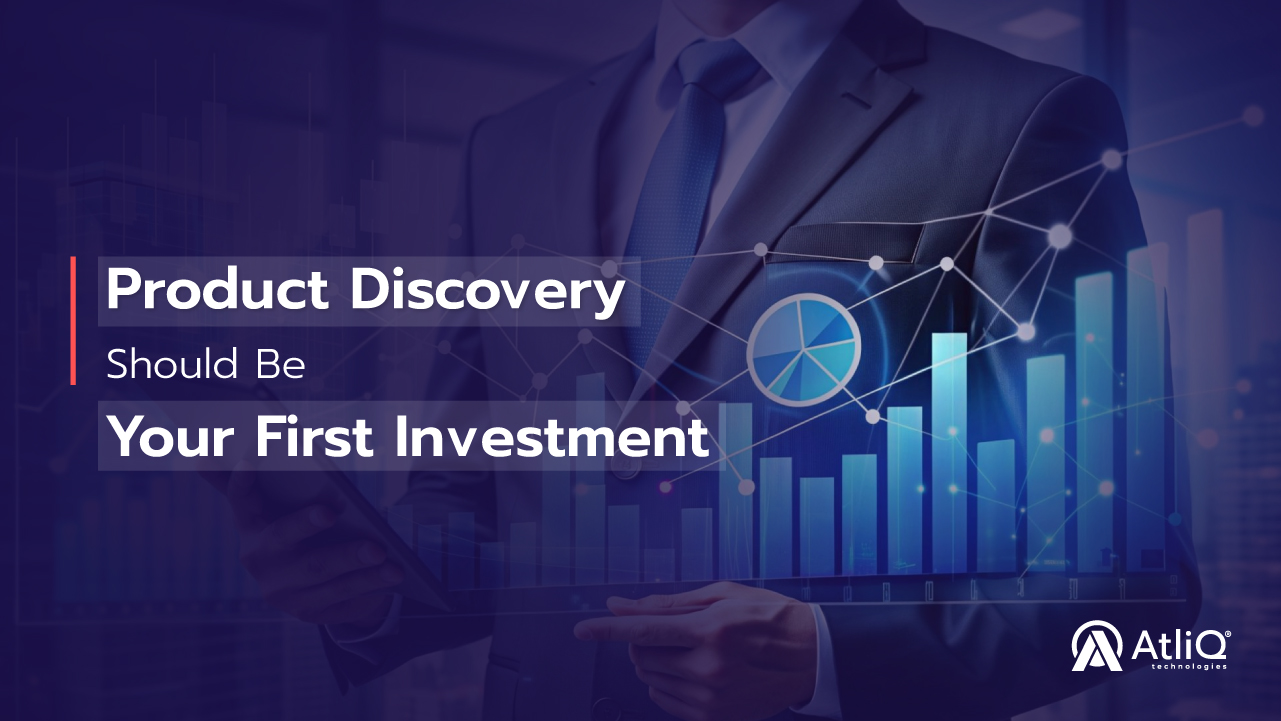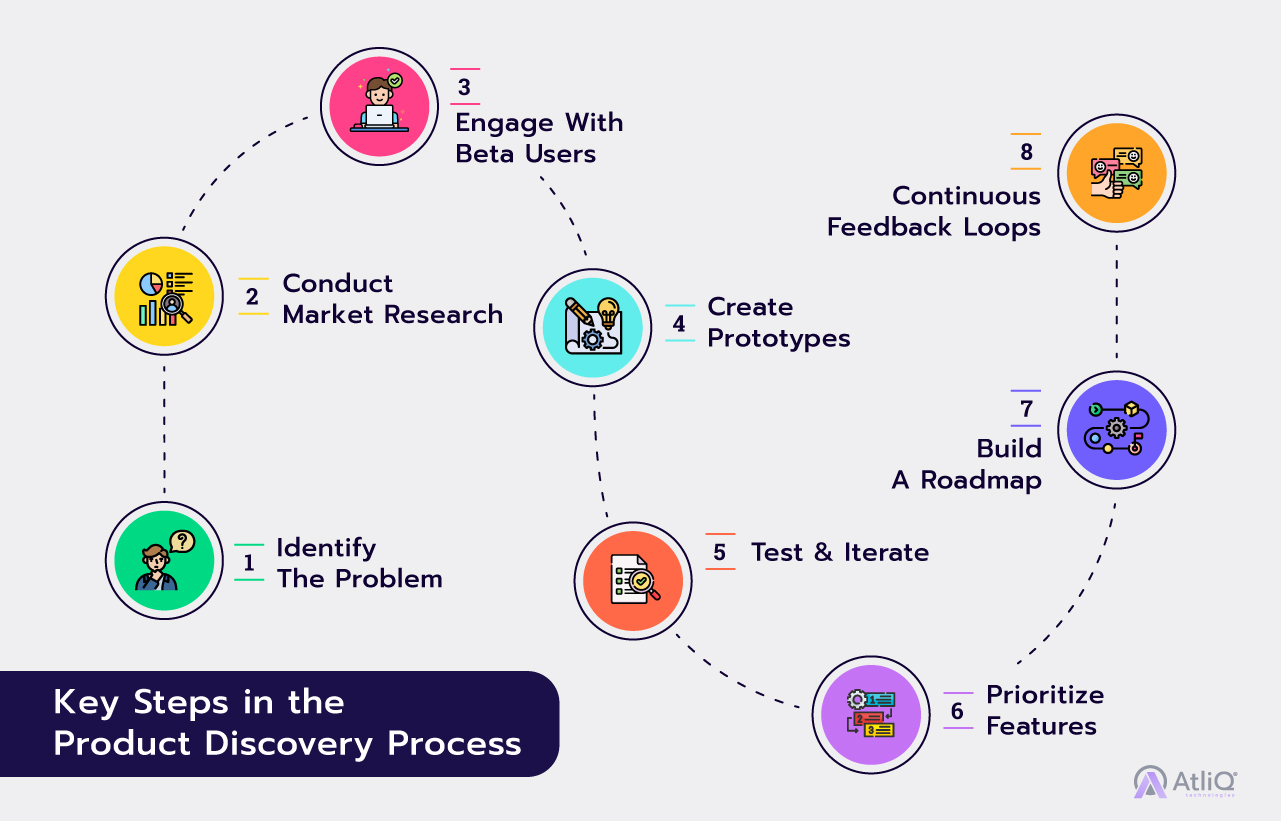
Did you know that 42% of startups fail because they develop products that the market doesn’t need? Or that 50% of a product’s development cost can be wasted on features that add no value? These numbers aren’t just abstract figures—they’re real consequences faced by businesses that skip the crucial step of product discovery.
Imagine spending months and thousands of dollars building a product, only to watch it fail due to avoidable mistakes. The truth is, investing in product discovery early on isn’t just smart—it’s essential. If you’re not starting with discovery, you’re starting with uncertainty. And in today’s fast-paced market, uncertainty costs more than you think.
What Is Product Discovery?
Product discovery is the initial phase of the product development process where teams explore and validate ideas before committing to full-scale development. It involves researching the market, understanding user needs, and testing concepts to ensure that the product you’re about to build solves the right problems. Essentially, it’s the process of ensuring product-market fit—making sure your product will resonate with its target audience—before investing time and resources.
Product discovery is critical because it reduces the risk of developing a product that fails to meet user expectations or market demand. By focusing on user needs from the start, teams can prevent costly missteps like building unnecessary features or targeting the wrong audience. The insights gained through research, validation, and prototyping not only shape the product’s direction but also provide clarity on what to build and why. Investing in this process early on allows for informed decisions, lowers development risks, and increases the likelihood of delivering a successful, user-centered product.
The Risks of Skipping Product Discovery
Wasted Resources: When you skip the product discovery phase, you’re essentially operating on assumptions, which can lead to wasted resources. In digital product development, this often results in building features that users don’t need or use.
Imagine developing a mobile app packed with advanced functionality, only to realize that users prefer a simpler, more intuitive interface. Without proper research and validation, you risk pouring time and money into developing unnecessary features that fail to provide value. The result? A bloated product that confuses users and a project that goes over budget—both of which could have been avoided with a clear discovery process.
Misalignment with Market Needs: History has shown that even well-funded digital products can fail if they don’t align with market needs. Take Google Wave, for example—an innovative product that aimed to revolutionize communication by combining email, messaging, and collaboration tools. However, it failed to gain traction because the team didn’t fully understand how users wanted to communicate.
Similarly, Quibi—a short-form video streaming service—invested heavily in developing its platform but overlooked key user preferences, like the need for content that could be easily shared or consumed on-demand. Both cases highlight the importance of product discovery in ensuring that the features and overall solution are aligned with real market demand.
Increased Costs: Skipping product discovery can lead to skyrocketing development costs down the line. Without proper validation, digital product teams often end up iterating on poorly understood requirements. This results in expensive reworks and longer timelines as developers struggle to fix what could have been identified and corrected early on.
For example, building a software platform without validating core user flows can lead to repeated redesigns, bug fixes, and feature rollbacks once it becomes clear that the original product missed the mark. These delays increase overall costs and slow down time-to-market, putting your business at a competitive disadvantage. By not investing in discovery upfront, you end up paying more to fix avoidable mistakes.
The Benefits of Investing in Product Discovery
- Early User Feedback: Gathering user feedback early in the product discovery phase helps identify potential issues and preferences before heavy development begins. By understanding what users need from the start, you save time and effort later, avoiding unnecessary rework or costly feature changes after launch.
- Data-Driven Decision Making: Product discovery allows teams to move beyond assumptions and make informed decisions backed by data. Research, testing, and user validation provide actionable insights, ensuring that development efforts are based on actual user behavior and preferences rather than guesswork.
- Better Product–Market Fit: A well-executed discovery process ensures that the final product resonates with both user needs and market demands. By prioritizing features that provide value, you create a product that is more likely to succeed in its target market, reducing the risk of misalignment.
- Reduced Risk: Investing in product discovery reduces financial and reputational risks. By thoroughly understanding the product landscape, you avoid the pitfalls of building something no one wants or spending money on features that don’t perform. This process gives you the confidence to move forward, knowing your product is on the right track.
How to Budget for Product Discovery?
When budgeting for product discovery, a good rule of thumb is to allocate around 10-20% of your total project budget to this phase. This investment covers critical activities like market research, user validation, and prototyping. Properly funding discovery ensures you’re building the right product and reduces the likelihood of costly changes during development.
Even a modest investment in product discovery can have significant returns. Spending early on understanding your users and validating concepts allows you to avoid expensive mistakes down the road. A small upfront cost for research and testing can save thousands by preventing wasted development efforts and steering your product toward success.
Investing in product discovery is not just a preliminary step; it’s a strategic move that can make or break your product’s success. By prioritizing early user feedback, validating your assumptions with data, and ensuring a better product-market fit, you minimize costly risks and set a strong foundation for development. Skipping this crucial phase often leads to wasted resources, misaligned products, and increased costs. In the fast-paced world of digital product development, taking the time and resources to thoroughly explore your ideas upfront will pay off exponentially in the long run. Start with discovery, and build a product that users want.
Don’t gamble with your product’s future! Start product discovery with AtliQ Technologies!
